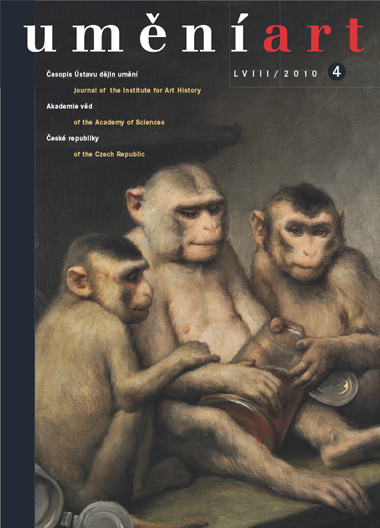Ivo Hlobil
Chimento Camicia in Tovačov in 1492 and in Prague and Kutná Hora in 1493?
Florian Zapletal (1884-1969) devoted attention to the relatively unusually early reception of the Italian quattrocento at the castle in Tovačov, the residence of Lord Ctibor Tovačovský of Cimburk ( 1494), the Lord Land's Mayor of Moravia under the Bohemian King Vladislas II and the Hungarian King Matthias Corvinus. In 1928 Zapletal reached the conclusion that the Renaissance portal of the chateau from 1492 was the work of 'an Italian stonemason who came to Tovačov, probably via Hungary, where, mainly under the influence of King Matthias, the Renaissance and the source of its spread, Italian artists, arrived very early and in abundance'. Over the objections of critics a fable then gradually evolved around this theme. In 1944 Emil Edgar published the claim that 'King Vladislas permitted his dear Ctibor Tovačovský of Cimburk to take [to Tovačov] for a short time, at most for one season, …his best labour … away from the construction of the summer hunting castle in Nyék.' In an unpublished paper Zapletal claimed that Ctibor arranged for Italian builders to work in Tovačov while he was in Budín on 11-22 February 1492 and that in 1492-1494 'Camicia and the sculptor Baccio Cellini were working' in Tovačov. After that Eva Šamánková, without citing Zapletal's work, with which she was probably familiar, wrote: 'From Hungarian sources we know of a document that has survived in which King Vladislav gives Ctibor permission to take for one summer the best of the workers building his hunting castle in Nyék. That master is undoubtedly the author of the representative portal of this otherwise Gothic castle…'. Zapletal did not say what was the source of his claim that Chimento Camicia and Baccio Cellini in Tovačov. However, it would have been the reports about both of these Florentine artists in the first edition of The Lives of the Artists by Giorgio Vasari in 1550. The conclusion that Chimento Camicia and Baccio Cellini were worked in Tovačov can neither be proved nor refuted. Today there are other indirect indicators Zapletal did not know about that support his claim. After leaving Budín and before returning to Florence, Chimento Camicia and his associates could with equal likelihood have demonstrated the art of the Italian quattrocento even a year later in Prague and Kutná Hora.
Full-text in the Digital Library of the Czech Academy of Sciences:
https://kramerius.lib.cas.cz/uuid/uuid:8d6083cd-4a23-55ab-0284-33dcba0faded
< back

